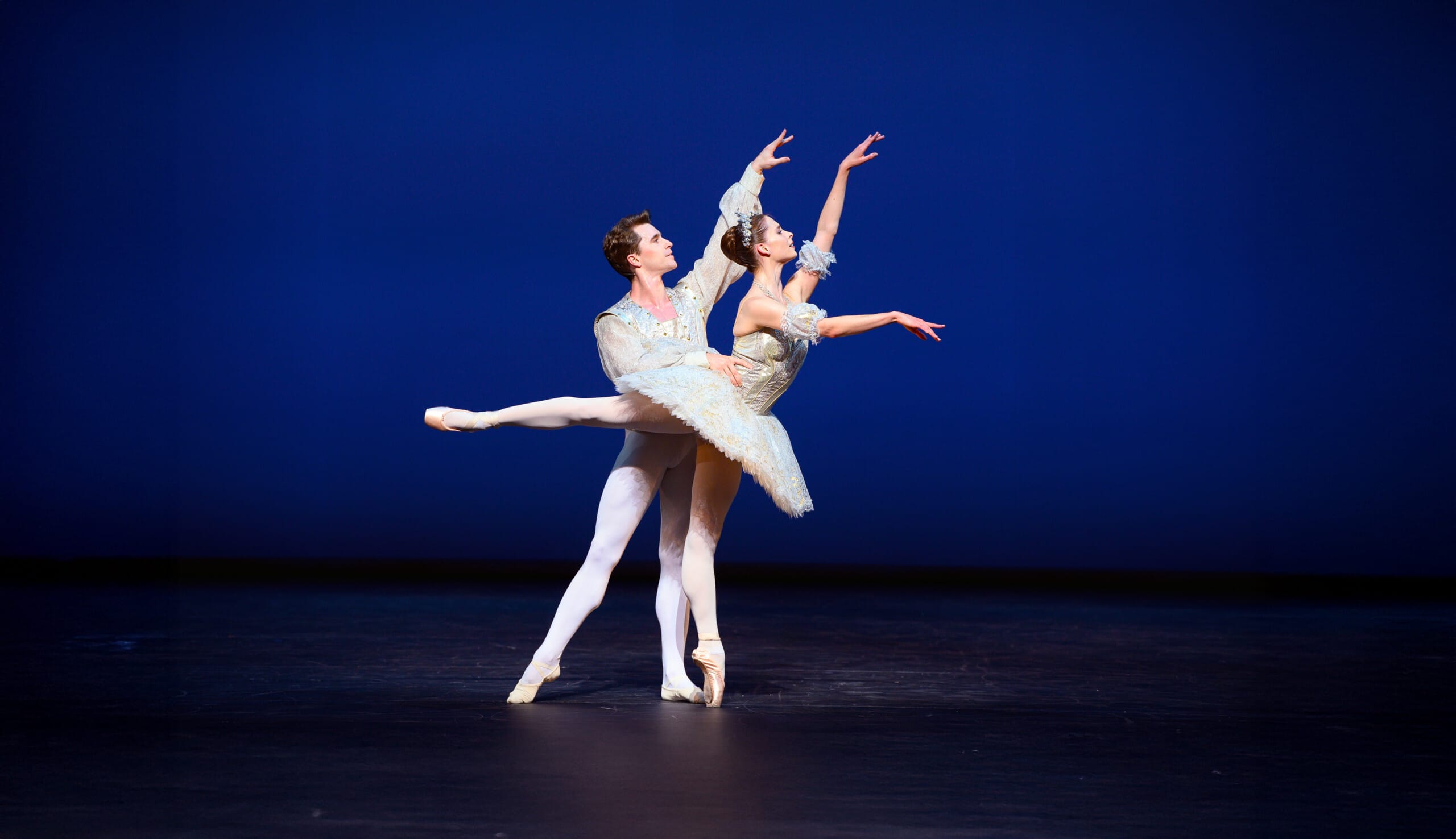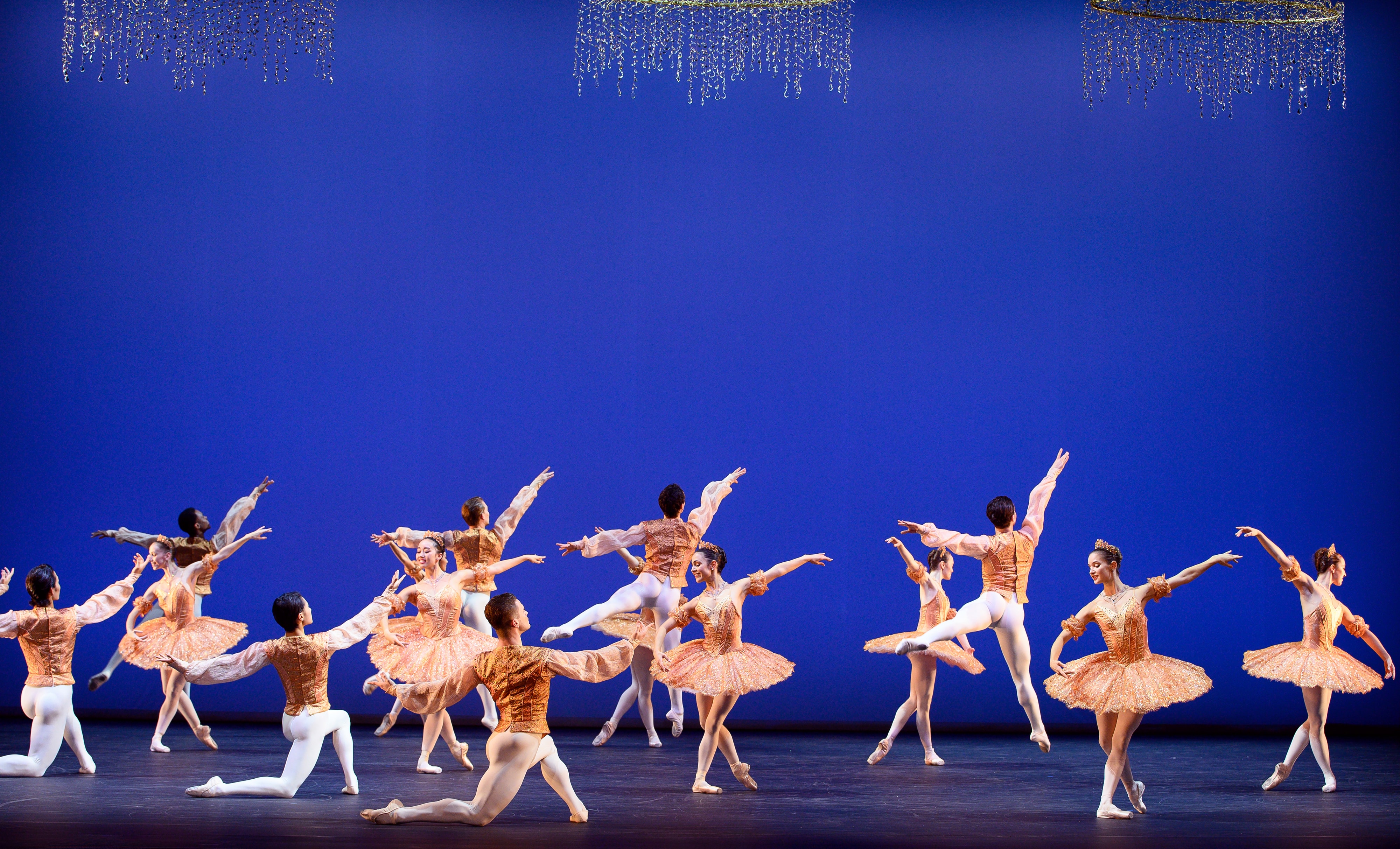
How Balanchine’s Theme and Variations continues to astonish
A showcase of virtuosity
Despite a running time of just under 25 minutes, Theme and Variations is considered by many as one of the most challenging ballets to perform. For the illustrious ballet star Mikhail Baryshnikov, the lead male role was the hardest he danced in his career. Why is that?
It was choreographed in just 39 hours: Balanchine rooted the movement vocabulary in precise ballet technique but gradually increased the difficulty of the steps in an attempt to challenge the dancers and eliminate any inclination to dance dramatically. The result was that he “took the lexicon of 19th-century ballet and plugged in a very modern voltage of energy and speed” (The Guardian).
Alicia Alonso, the legendary Cuban prima ballerina who performed the original leading female role, said: “In Theme and Variations, Balanchine kept testing me all the time, establishing a kind of fight in between my technical strength and his choreography. (…) That’s why the version presented in the premiere was technically and musically very complicated”.
Balanchine accelerated the flow of choreographic phrases and consequently amplified the sharpness and precision of the steps. This has made it an all-time favourite for many dancers. Tiler Peck, Principal Dancer at New York City Ballet comments:
“Theme and Variations is my favourite ballet. It’s basically 20 minutes of non-stop dancing. The solos are technically demanding, then after you finish your second solo, the ballerina stays onstage, and heads right into the long pas de deux. The music in the pas de deux is absolutely stunning and once you get to the finale, you are completely exhausted, but the music keeps building and carries you the rest of the way through.”
Former ballerina with American Ballet Theatre, Cynthia Harvey, who is now a teacher and coach, and Associate Guest Repetiteur at ENB, has been working with our dancers. “It’s a tough one on stamina but technically, you really feel at the top of your game. The dynamism is in the music and should be in the steps. It gives it a sparkle. It’s like champagne: bubbling. It’s glorious.”
The speed of movement, technical dexterity, and overall spectacle of the work, leave audiences breathless. Theme and Variations is a real showcase of virtuosity and bravura.

Musicality is key: “see the music, hear the dance”
Musicality is at the core of Balanchine’s style. He said: “Music puts a time corset on the dance… A choreographer can’t invent rhythms, he can only reflect them in movement.”
As a result, Balanchine’s choreography always interprets the music closely, with dancers appearing to almost ‘speak’ the music through their movements.
Theme and Variations is a perfect example: Balanchine listened to Tchaikovsky’s score and explored how he could best serve the 12 variations from the final movement of The Orchestral Suite No. 3. Like the music, his choreography begins with simple steps and gestures, then builds gradually in complexity towards a grand finale.
According to Victoria Simon, who is staging Theme and Variations for English National Ballet, music and dance become one in Balanchine’s work: “it’s the visualisation of the music”. Watching steps that seem to make music 3-dimensional is what makes the piece so thrilling to audiences.

A visual spectacle
For Balanchine, “ballet may contain a story, but the visual spectacle, not the story, is the essential element”. As such, he often de-emphasised dramatic narratives to highlight the choreography – something not seen in traditional ballets. The steps and the dance quality were the driving force.
The choreography in Theme and Variations celebrates Balanchine’s Ballets Russes roots and the vigour of classical ballet technique. It is an ode to the ballet he grew up with.
The work feels grandiose. It follows a two principal dancers who perform a pas de deux, soloists alternating variations and a final grand “polonaise” for all the 26 dancers on stage.
It takes place under grand chandeliers, with stunning tutus and costumes bringing to life the traditional image of a ballerina. For this staging, designer Roberta Guidi di Bagno has created brand new designs that honour the elegance and timelessness of the piece.
Experience Balanchine’s masterpiece as part of R:Evolution at Sadler’s Wells, London, 1 -11 October 2025.